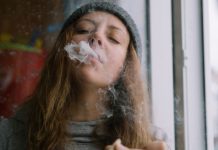The Centers for disease control reported that 23,000 people died in 2012 and over two million were sickened to the point of hospitalization by exposure to antibiotic resistant bacteria. The CDC notes that three bacteria are an urgent threat, 12 bacteria are a serious threat, and three bacteria are a concerning threat. Biologist Miriam Barlow of the University of California at Merced and mathematician Kristina Crona of American University have developed a regimen that reverses antibiotic resistance using a set of 15 antibiotics.
The World Health Organization reported a growth of resistance to antibiotic and antimicrobial drugs in infectious diseases like HIV and tuberculosis across the world in 2015. The report notes a growing limitation on the success of the most antibiotic common treatments for highly infectious diseases. The report also indicates that extreme treatments that have a high potential to kill the patient have become the last resort to treat antibiotic resistant diseases that are highly contagious.
The researchers have developed a simple procedure that involves the cycling of commonly used antibiotics to reverse the antibiotic resistance in disease causing bacteria. Cycling means that one antibiotic is used then replaced by another and repeated until the bacteria is defeated. The arsenal that the researchers developed contains 15 commonly used antibiotics including penicillin.
The new procedure basically reverses the evolution of bacteria to become antibiotic resistant. The study found that as few as six drugs are needed to accomplish the feat of defeating antibiotic resistant bacteria in a laboratory setting. The researchers show that a tailor-made plan can be developed for individual disease producing bacteria. The procedure has not been tested in people yet but is recommended as an alternative to presently used procedures.















